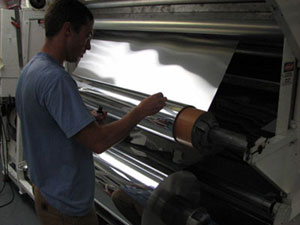German researchers have broken the record for thin-film PV efficiency, achieving 20.8%.
This milestone is especially important because it is the first time thin-film has exceeded the efficiency of standard multicrystalline silicon solar, which currently reaches 20.4% for peak performance.
One of the reasons silicon-based PV still dominates the market is its greater ability to convert sunlight into electricity.
When thin-film PV first became viable, many thought it would overtake silicon-based technologies, but lower efficiency has held it back. Thin-film, popularized mostly by First Solar, has many advantages. Using a "thin film" instead of heavy glass panels requires less material and energy to manufacture -it can be printed on sheets – and the lack of silicon also cuts costs.

"Our new record shows that CIGS thin-film technology still has untapped technological and economic potential," says Michael Powalla, a professor who heads the photovoltaics division at the Centre for Solar Energy and Hydrogen Research.
Fraunhofer Institute for Solar Energy Systems duplicated the research and confirmed it.
"It may take a little time for the higher efficiency to be reflected in production," says Powalla, "but 16-18% in commercial modules is possible over the next few years." Even that would be a big boost because CIGS solar panels mostly attain efficiencies of 14-15% – a module always has lower efficiency than an individual solar cell.
First Solar, which has broken many records on thin-film efficiency, currently gets 16.1%.

This is wrong. Check the NREL solar efficiency record chart. This may be the first time CIGS thin film has reached this level, but GaAs thin film holds the world record at over 28%